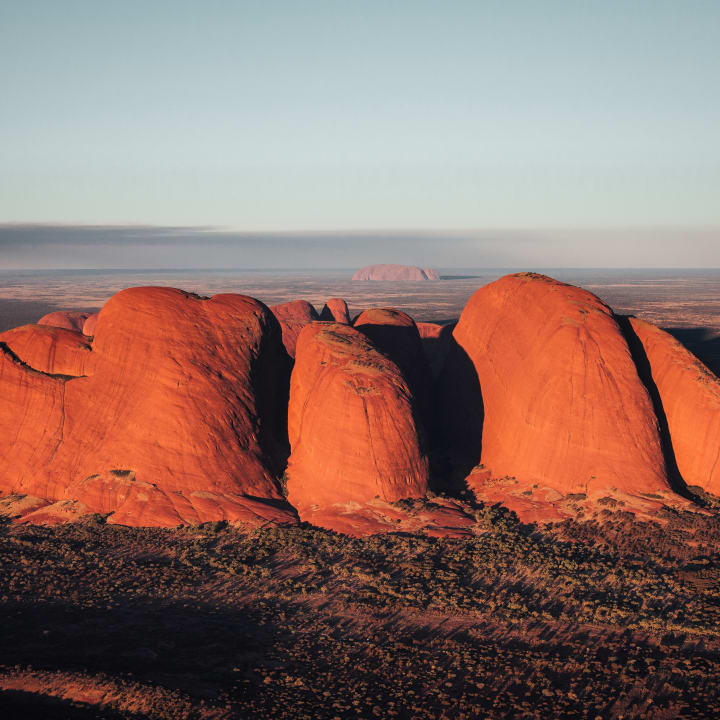Northern Territory
Kata Tjuta / The OlgasWitness the red domes of Kata Tjuta (The Olgas) that rise majestically out of the landscape across miles of desert, harbouring secrets and legends of traditional owners and offering a spiritual journey for all of its visitors.This is an Anangu men's site and is sacred under Tjukurpa (law).
Everyone is welcome and encouraged to visit but as with all areas of the park, please stay on the marked tracks. Located 26 km along the road to Kata Tjuta, this short, easy walk offers a magnificent panoramic view of the domes and a relaxing place to sit and absorb this ever-changing landscape.
At sunrise and sunset it is awe-inspiring. Allow at least half an hour for this 600-metre walk. To enter the park you’ll need a park pass, which you can pre-purchase online for quick and easy entry.
Read More
Learn from a local guide at Kata Tjuta/The Olgas
The centre offers information about activities and the park as well as an introduction to Anangu culture.
Because of the deeply spiritual nature of the area and what is contained within the Cultural Centre, please do not photograph or video inside the building or precinct.
This is to respect the wishes of the traditional owners and protect Anangu's cultural and intellectual property.
This award-winning Cultural Centre, a stunning example of contemporary Australian architecture.
Dynamic displays, video and artwork explain this world heritage landscape from the perspective of the traditional owners, Anangu.
Learn about Tjukurpa, creation stories and laws, which explain the spiritual meanings of the surrounding landscapes. To enjoy the Uluru-Kata Tjuta Cultural Centre you must enter Uluru-Kata Tjuta National Park.
Discover more in Northern Territory
- Alice Springs & Surrounds
- Arnhem Land
- Darwin & Surrounds
- Kakadu & Surrounds
- Karlu Karlu/Devils Marbles Conservation
- Kata Tjuta / The Olgas
- Katherine & Surrounds
- Kings Canyon
- Litchfield National Park
- Mary River
- Mataranka
- Mt Borradaile
- Nitmiluk National Park (Katherine Gorge)
- Tennant Creek & Barkly Region
- Uluru & Surrounds
